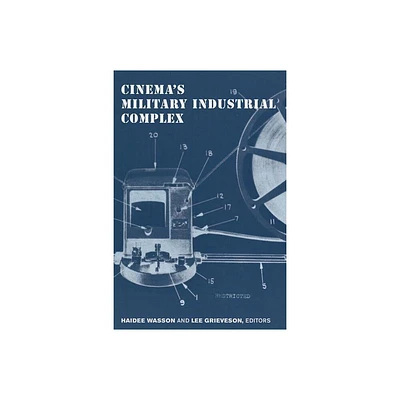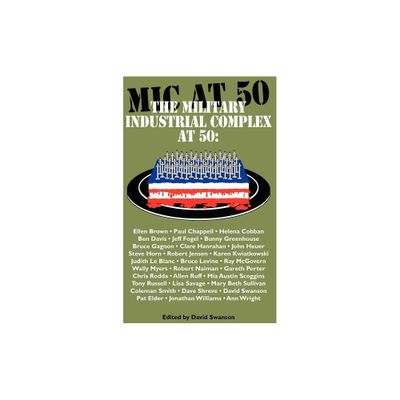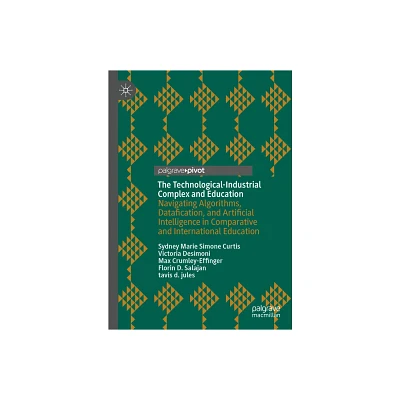Home
Delta of Power: The Military-Industrial Complex
Loading Inventory...
Barnes and Noble
Delta of Power: The Military-Industrial Complex
Current price: $29.00


Barnes and Noble
Delta of Power: The Military-Industrial Complex
Current price: $29.00
Loading Inventory...
Size: Paperback
*Product Information may vary - to confirm product availability, pricing, and additional information please contact Barnes and Noble
Does the Military-Industrial Complex as we understand it still exist? If so, how has it changed since the end of the Cold War?
First named by President Dwight D. Eisenhower in his farewell address, the Military-Industrial Complex, originally an exclusively American phenomenon of the Cold War, was tailored to develop and produce military technologies equal to the existential threat perceived to be posed by the Soviet Union. An informal yet robust relationship between the military and industry, the MIC pursued and won a qualitative, technological arms race but exacted a high price in waste, fraud, and abuse. Today, although total US spending on national security exceeds $1 trillion a year, it accounts for a smaller percentage of the federal budget, the national GDP, and world military spending than during the Cold War. Given this fact, is the MIC as we commonly understand it still alive? If so, how has it changed in the intervening years?
In
Delta of Power
, Alex Roland tells the comprehensive history of the MIC from 1961, the Cold War, and the War on Terror, to the present day. Roland argues that the MIC is now significantly different than it was when Eisenhower warned of its dangers, still exerting a significant but diminished influence in American life. Focusing intently on the three decades since the end of the Cold War in 1991, Roland explains how a lack of cohesion, rapid change, and historical contingency have transformed America's military-industrial institutions and infrastructure.
Roland addresses five critical realms of transformation: civil-military relations, relations between industry and the state, among government agencies, between scientific-technical communities and the state, and between technology and society. He also tracks the way in which America's arsenal has evolved since 1991. The MIC still merits Eisenhower's warning of political and moral hazard, he concludes, but it continues to deliver, by a narrower margin, the world's most potent arsenal. An authoritative account of America's evolving arsenal since World War II,
is a dynamic exploration of military preparedness and current events.
First named by President Dwight D. Eisenhower in his farewell address, the Military-Industrial Complex, originally an exclusively American phenomenon of the Cold War, was tailored to develop and produce military technologies equal to the existential threat perceived to be posed by the Soviet Union. An informal yet robust relationship between the military and industry, the MIC pursued and won a qualitative, technological arms race but exacted a high price in waste, fraud, and abuse. Today, although total US spending on national security exceeds $1 trillion a year, it accounts for a smaller percentage of the federal budget, the national GDP, and world military spending than during the Cold War. Given this fact, is the MIC as we commonly understand it still alive? If so, how has it changed in the intervening years?
In
Delta of Power
, Alex Roland tells the comprehensive history of the MIC from 1961, the Cold War, and the War on Terror, to the present day. Roland argues that the MIC is now significantly different than it was when Eisenhower warned of its dangers, still exerting a significant but diminished influence in American life. Focusing intently on the three decades since the end of the Cold War in 1991, Roland explains how a lack of cohesion, rapid change, and historical contingency have transformed America's military-industrial institutions and infrastructure.
Roland addresses five critical realms of transformation: civil-military relations, relations between industry and the state, among government agencies, between scientific-technical communities and the state, and between technology and society. He also tracks the way in which America's arsenal has evolved since 1991. The MIC still merits Eisenhower's warning of political and moral hazard, he concludes, but it continues to deliver, by a narrower margin, the world's most potent arsenal. An authoritative account of America's evolving arsenal since World War II,
is a dynamic exploration of military preparedness and current events.


















